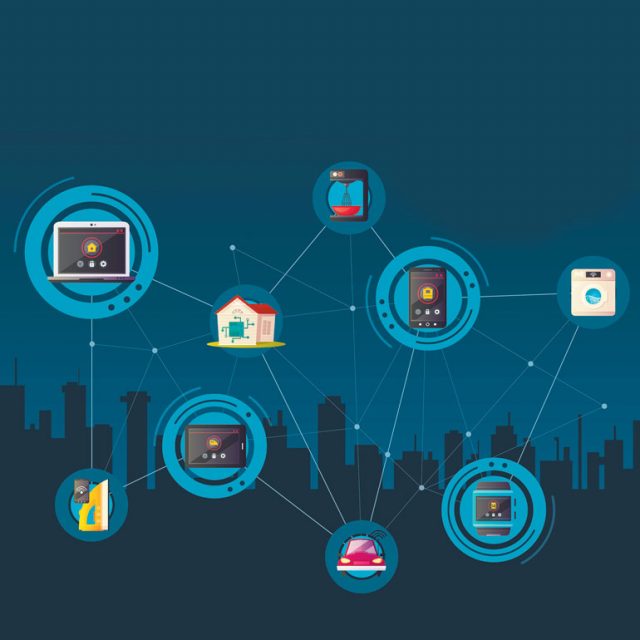Building smarter homes and businesses

While digital technologies are not new for several homes and businesses, their usage and significance accelerated. Essentially, they support humans to accomplish tasks easier and faster, making them much functional amid the ongoing quarantine impositions.
As almost everyone stays at home for safety reasons, digital technologies provide the people means both for remote work or learning. Beyond these, recent technological advancements bring home various sources for entertainment and easier ways of doing tasks through a range of “smart” appliances.
Televisions, for instance, do not always rely on cable television service, video players, and DVDs to let homeowners watch films or shows. With the rise of smart TVs, people can connect the device to the internet, which can lead them to different video streaming services like Netflix, Disney+, and Prime Video, as well as audio platforms like Spotify. Additionally, people can browse the Web using smart TVs.
Such streaming services, which are also accessible through smartphones, tablets, and desktops, have also transformed media consumption and have become ultimate sources of entertainment for many people amid the lockdown.
In fact, the BBC reported that during the first three months of 2020, Netflix experienced a surge in subscribers as nearly 16 million people created accounts. As of the second quarter this year, according to Insider Intelligence, the service has roughly 209 million global paid memberships.
But aside from opening up households to several entertainments, digital technologies have also helped them making life at home more at ease and secure.
With the support of artificial intelligence (AI), several homes are equipped with virtual assistants like Amazon’s Alexa, Apple’s Siri, and Google Home. These technologies respond to various voice commands, say being instructed to play music or turn the lights on or off.
Millions of voice assistants have been helping households in the United States alone. Such technology in American homes has grown to 25 million units since 2017 and is anticipated to increase to 275 million by 2023, a Tech Wire Asia report stated in January.
Materials for cooking and cleaning at home have also recently undergone some enhancements. Amazon’s Smart Oven, for instance, has a voice control function through Alexa, which notifies the household when the food is ready. Another efficient device more used at home nowadays is the robot vacuum cleaners like iRobot’s Roomba, which automatically guide itself in cleaning the house floorings.
Aside from helping the household with different tasks, some technologies have also made home living conveniently secured through the emergence of smart locks and smart doorbells.
Some locks nowadays are controllable via mobile applications. An example is the smart locks of Yale that are controllable via the Yale Access App. It lets the user lock and unlock the door, grant access to others, and keep track of visitor access through one’s mobile phone.
Meanwhile, smart doorbells can provide an extra layer of security for the household. This device, as described by a CNBC report, usually notifies homeowners through a mobile phone when someone wants to access their property. It also allows the homeowners to see and even speak to the person.
These advancements vow to make home living easier for individuals, along with the many possibilities in their smartphones and desktops that allow them to communicate, work or study remotely, and do shopping.
Thus, as consumers use electronic devices for their needs at home, this means that businesses continuously employ advanced technologies in their operations. Such technologies like AI also seek to improve the customer experience.
AI, as defined in an article published by the University of Queensland (UQ) on its website, is “used to describe machines that mimic cognitive functions that humans associate with other human minds, such as learning and problem-solving.”
Many businesses use AI to create an online chatbot, which functions as a tool for customer service. “Tools such as Chatbots can simultaneously respond to many customer enquiries all at once, at a much faster rate than a human can,” Dr. Ida Someh, a business information systems expert at UQ Business School, was quoted as saying.
Furthermore, such technology can also significantly support sales and marketing. “AI will work with Customer Relationship Management programs to aggregate and interpret raw data in real-time. Lead times for sales will be a lot more efficient and customer journey mapping will be more granular,” explained Sarah Kelly, an associate professor at UQ Business School. Hence, this can recognize the preferences of a customer even before entering the store, whether online or offline.
Another technology helpful for businesses in presenting their products are the virtual and augmented realities (VR and AR).
“[VR and AR] are a great value-add to help consumers gain a more enriched experience of a product or service, which can help customers reduce a risk of uncertainty and therefore boost brand preference and sales,” Ms. Kelly said.
Thus, while giving a realistic sample before procurement, VR and AR allow an immersive and interactive shopping experience for a customer even at the comforts of home or anywhere else. — Chelsey Keith P. Ignacio



